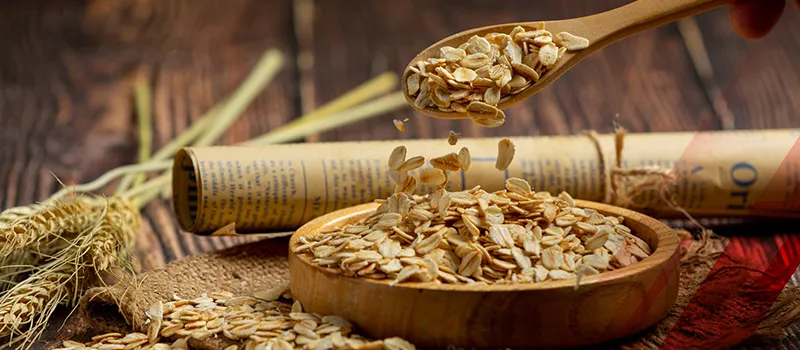In the realm of brewing and distilling, where creativity and craftsmanship converge, a secret ingredient lies at the heart of captivating flavors and mesmerizing hues - specialty malt. With its ability to transform ordinary beverages into extraordinary libations, it takes center stage, captivating the senses and tantalizing taste buds. Let’s dive in and understand everything about it.
What is Specialty Malt?
Specialty malt refers to a range of malts that are used in the brewing process and offer unique flavors, colors, and aromas to beer. These malts are different from base malts, which provide the majority of the fermentable sugars in beer.
According to Kings Research, the global Specialty Malt Market is anticipated to reach USD 4,257.3 million by 2030, growing at a CAGR of 6.14% from 2023 to 2030. This number is a clear indication of the positive growth of the market.
Different Types of Specialty Malts
These malts are typically classified into three main types:
- Crystal/Caramel Malt: Crystal or caramel malts are made by roasting malted barley at specific temperatures to develop a range of flavors, colors, and sweetness. These malts contribute to the body, sweetness, and caramel-like flavors of beer.
- Roasted Malt: Roasted malts are produced by subjecting malted barley to higher temperatures, resulting in darker colors and roasted flavors. Examples of roasted malts include chocolate malt and black malt, which add chocolate, coffee, and roasted notes to beer.
- Dark Malt: Dark malts are heavily roasted malts that provide a deep color and intense flavors to beer. They can include malts like roasted barley or black patent malt, which are used in small quantities to achieve a rich, dark color in certain beer styles like stouts and porters.
Their characteristics, including color, flavor, and aroma, depend on different factors, such as the malting process, grain type, and roasting technique. Brewers use these malts in different proportions and combinations to create a wide range of beer styles with unique profiles.
Benefits of Specialty Malt
Specialty malts are widely used in the brewing industry to add complexity, flavor, and color to beers. Here are some common uses:
- Enhancement of Flavor: They provide beer with distinctive characteristics, including caramel, toffee, chocolate, coffee, nutty, and roasted overtones. These flavors can add richness and depth to the beer's overall flavor profile.
- Color Adjustment: The color intensity of these malts varies, ranging from light gold to dark black. These malts can be used by brewers to change the hue of their beer from a lighter, richer golden hue to a darker, darker shade.
- Body and Mouthfeel: They can give the beer more body and a better mouthfeel. These malts' sugars and proteins make the beer's texture fuller & smoother and give it a heavier mouthfeel.
- Style-Specific Characteristics: These malts play a significant role in defining specific beer styles. For example, roasted malts like chocolate malt and black malt are commonly used in stouts and porters to create their distinct roasted flavors and dark appearance.
- Balance and Complexity: By incorporating different types of malts into a beer recipe, brewers can achieve a balanced and complex flavor profile. The combination of base malts, hops, and yeast creates a harmonious blend of flavors that can range from sweet and malty to bitter and hoppy.
It's important to note that the specific uses of these malts can vary depending on the beer style and the brewer's preferences. Brewers often experiment with different combinations of it to create unique and innovative flavors in their beers.
Applications of Specialty Malt
Specialty malt finds applications in various industries, primarily in the brewing and distilling sectors, as well as in non-alcoholic beverages and baking. Here are some common applications:
- Brewing: It is extensively used in the brewing industry to create a wide range of beer styles. It adds flavor, color, body, and complexity to the beer, enhancing its overall taste profile. Different types are employed to achieve specific beer characteristics, such as roasted malts for stouts and porters or crystal malts for amber ales.
- Distilling: It is also utilized in the distilling industry for the production of spirits such as whiskey, bourbon, and malt-based liquors. The flavor and color contributions from this malt can bring complexity and depth to these distilled beverages.
- Non-Alcoholic Malted Beverages: Specialty malt is used in the production of non-alcoholic malt beverages. These include malt-based sodas, malted milkshakes, and malted energy drinks. It provides the characteristic malt flavor and sweetness in these beverages.
- Baking: It is occasionally used in baking, particularly in the production of artisan bread and certain confections. It can contribute to the flavor, color, and texture of baked goods, adding a unique touch to the final product.
The rise of microbreweries and the artistry of craft beer production have ignited a craving for these malts. These hidden gems are the secret ingredients behind the exceptional brews that set each microbrewery apart.
Final Thoughts on Specialty Malt
Craft beers are no longer just beverages; they're an experience. The global surge in craft breweries is a testament to this phenomenon. With each crafted batch, they're shaping not just taste buds, but also the landscape of the brewing world. At the heart of this revolution is the growing demand for these malts – the true soul of these innovative concoctions.
Yet, there's another side to the story, one involving the intricacies of supply and demand. As breweries strive to craft perfection, sourcing quality raw materials becomes a paramount concern. With competition and diversification on the rise, prices of these precious ingredients are following suit. The economic ripple effect is real, impacting profit margins across the industry.
This prompts a dance of strategy among key players – adapting to changing times. Shifting sourcing tactics becomes essential to keep the equilibrium. However, as raw material prices waltz unpredictably, the delicate malt supply chain might face hurdles. These fluctuations, if unchecked, have the potential to cast shadows on the growth trajectory of the specialty malt market in the foreseeable future.




